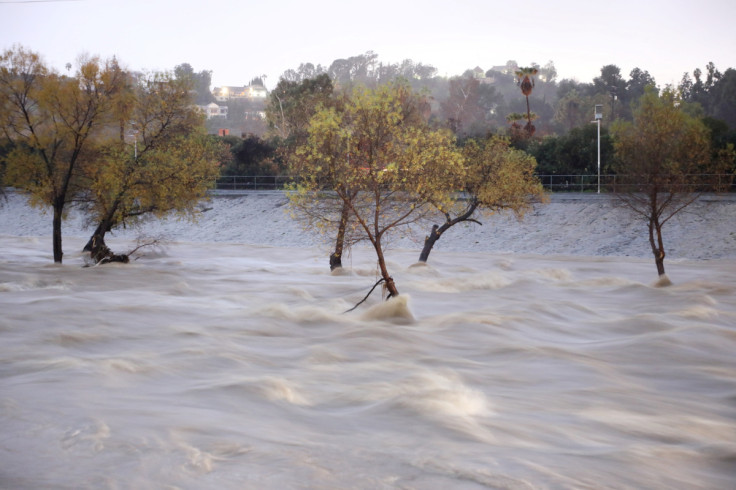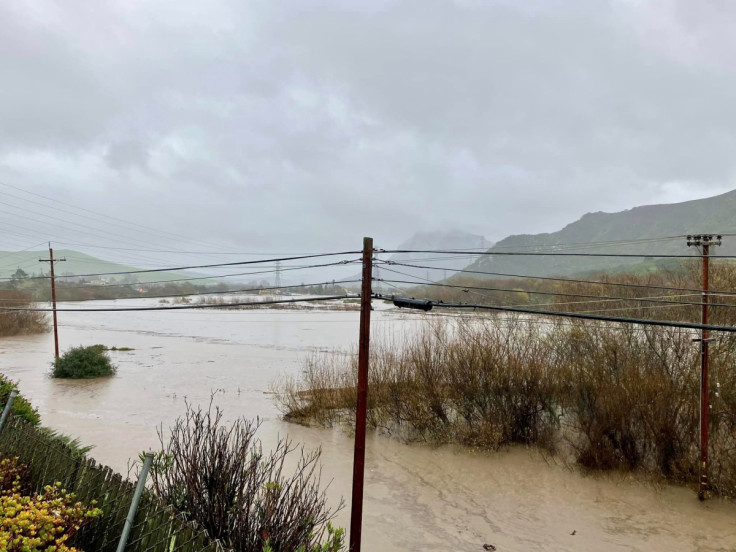Storms Inundate California, Provoking Mudslides, Evacuations

The latest Pacific storm unleashed torrential downpours and damaging winds in California on Tuesday, knocking out power and turning city streets into rivers as mudslides cut off highways and entire communities faced evacuation orders.
More than 33 million Californians were threatened by severe weather throughout the day as "heavy to excessive" rainfall was expected across the state, especially in southern California, as winds gusts were clocked at more than 40 miles (64 km) an hour in many places, the National Weather Service (NWS) said.
The high winds wreaked havoc on the power grid, knocking out electricity to 180,000 homes and businesses as of midday Tuesday, according to data from Poweroutage.us.
"This storm was different from the standpoint that it was here much longer. It was more intense because of the prior storm, the ground was much more saturated, which led to a lot more flooding and a lot more rescues because of the ground saturation," said Barry Parker, division chief of the Ventura County Fire Department.
Experts say the growing frequency and intensity of such storms, interspersed with extreme heat and dry spells, are symptoms of climate change. Though the rain and snow will help replenish reservoirs and aquifers, a mere two weeks of precipitation will not solve two decades of drought. Meanwhile, terrain denuded by past wildfires has created an increased risk of flash floods and mudslides.
The torrential rains, along with heavy snow in mountain areas, follow yet another "atmospheric river" of dense moisture funneled into California from the tropical Pacific, powered by sprawling low-pressure systems churning offshore.
With the soil already saturated, much of the damage has been concentrated around the city of Santa Barbara, about 100 miles (160 km) northwest of Los Angeles, where the steep foothills slope toward the Pacific Ocean.
Several remote spots have reported more than a foot (30 cm) of rain including the San Marcos Pass in the Santa Ynez Mountains above Santa Barbara, where more than 17 inches (43 cm) have fallen, according to the NWS.
In the Rancho Oso area of the Santa Ynez Mountains, mud and debris across the roadway isolated about 400 people and 70 horses, the Santa Barbara County Fire Department said on Twitter, posting a photo of a vehicle stuck in the mud. Rescue teams were on the way, spokesperson Scott Safechuck said.
Near the coast, the California Highway Patrol closed U.S. 101, the main highway connecting northern and southern California, with no estimated time on reopening.
"Please stay home and do not drive today if at all possible," the highway patrol advised on Twitter, posting pictures of mudslides and fallen rock that blocked the highway.
Many communities were flooded including Goleta, where a man rode his paddleboard through the streets.
On Monday, officials ordered the evacuation of some 25,000 people, including the entire affluent enclave of Montecito near Santa Barbara, due to heightened flood and mudslide risks. The 4,000 people of Planada, a community in Central California, started their Tuesday morning with an order to evacuate their homes by the county sheriff's office.
The Montecito evacuation zone was among 17 California regions where authorities worry the ongoing torrential downpours could unleash lethal cascades of mud, boulders and other debris in the hillsides.
Further south in the Los Angeles neighborhood of Chatsworth, two vehicles fell into a sinkhole that opened beneath a road.
Floodwaters invaded the train station in downtown Los Angeles, submerging a pedestrian walkway.
At least a dozen fatalities have been attributed to several back-to-back storms that have lashed California since Dec. 26.


© Copyright Thomson Reuters {{Year}}. All rights reserved.





















